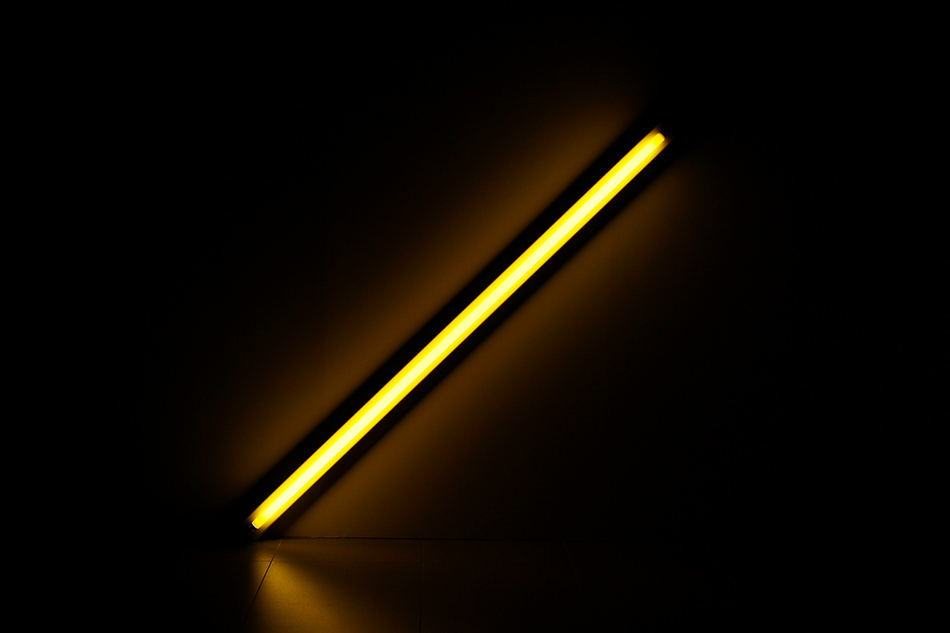Time:2025-05-22
Neon light tubes, once synonymous with retro signage, have re-emerged as a versatile medium in contemporary design, bridging the gap between artistic expression and technological innovation. From immersive art installations to smart architectural accents, these luminous tubes are redefining how spaces communicate emotion and identity. This article explores the evolving role of neon light tubes, their material advancements, and their growing influence across industries seeking to merge aesthetics with functionality.
The Renaissance of Neon in Modern Design
Neon light tubes have transcended their vintage roots, becoming symbols of creativity in a digitally driven world. Their resurgence is fueled by:
Nostalgic Appeal: Reviving mid-century aesthetics for boutique hotels, retro-themed venues, and pop culture events.
Artistic Versatility: Enabling custom typography, abstract shapes, and 3D installations that challenge traditional lighting norms.
Cultural Relevance: Serving as a canvas for social commentary in public art, reflecting themes like sustainability or inclusivity.
Designers now leverage neon’s emotive glow to craft spaces that resonate emotionally while standing out visually.

Material and Manufacturing Innovations
Advancements in neon tube production are expanding their application scope:
Durable Alternatives: Shatterproof acrylic and silicone tubes replicate glass neon’s glow while offering impact resistance for high-traffic areas.
Eco-Friendly Gas Blends: Transitioning from traditional neon gas to argon-based mixtures or LED-integrated systems for reduced environmental impact.
Modular Systems: Interconnectable tubes allowing scalable designs, from compact retail displays to expansive architectural façades.
Phosphor Coatings: UV-reactive and color-shifting finishes that create dynamic effects under varying light conditions.
These innovations ensure neon remains relevant in both aesthetic and practical contexts.
Neon’s Expanding Role Across Industries
Architectural Lighting: Outlining building contours, bridges, or urban landmarks to enhance nighttime cityscapes.
Retail Experiences: Curated window displays and in-store installations that blend branding with experiential storytelling.
Interactive Art: Exhibits where neon responds to touch, sound, or motion, transforming viewers into active participants.
Hospitality Design: Mood-enhancing accents in bars, lounges, and restaurants that evoke intimacy or vibrancy.
For example, a Tokyo gallery recently showcased a neon maze that changes colors based on visitor movement, merging art with sensory engagement.
Sustainability: Balancing Glow and Responsibility
As environmental awareness grows, the neon industry is adopting greener practices:
Energy-Efficient LEDs: Hybrid systems combining neon’s aesthetic with LED efficiency for 24/7 operation at lower costs.
Recyclable Components: Suppliers offering take-back programs to repurpose glass, gases, and metals.
Low-Impact Production: Reducing reliance on rare gases and prioritizing renewable energy in manufacturing.
Brands like eco-conscious hotels now opt for solar-powered neon signage, aligning visibility goals with carbon neutrality.
Neon in the Age of Smart Technology
Integration with digital systems is unlocking new possibilities:
IoT Connectivity: Neon tubes synced with smart devices to adjust colors or patterns via apps, voice commands, or biometric data.
Augmented Reality (AR): Layering digital content over physical neon installations for hybrid experiences in retail or events.
Data-Driven Design: Using AI to generate neon layouts based on user behavior, traffic flow, or seasonal trends.
A luxury car brand recently debuted AR-enabled showrooms where neon-lit cars “come alive” with interactive features via smartphone scans.
Future Directions: Neon as a Medium of Tomorrow
Self-Healing Materials: Tubes with microcapsule technology to repair minor cracks autonomously.
Biophilic Integration: Neon paired with living walls or natural materials to create organic, calming environments.
Holographic Neon: 3D projections mimicking neon’s glow for weightless, futuristic installations.
Conclusion
Neon light tubes are no longer relics of the past but dynamic tools shaping the future of design. By embracing material innovation, sustainability, and smart technology, they offer limitless potential to transform spaces into emotive, interactive experiences. For designers and businesses, neon represents a unique opportunity to blend artistry with purpose—illuminating not just physical environments, but also cultural narratives and brand identities.
To stay ahead, collaborate with innovators pushing neon’s boundaries, ensuring your projects glow with both creativity and relevance in an ever-evolving world.